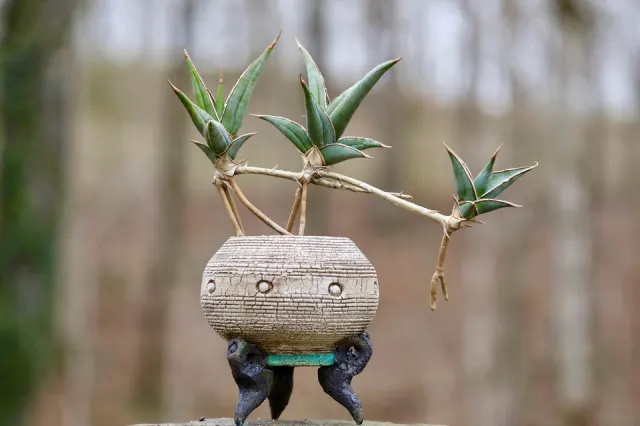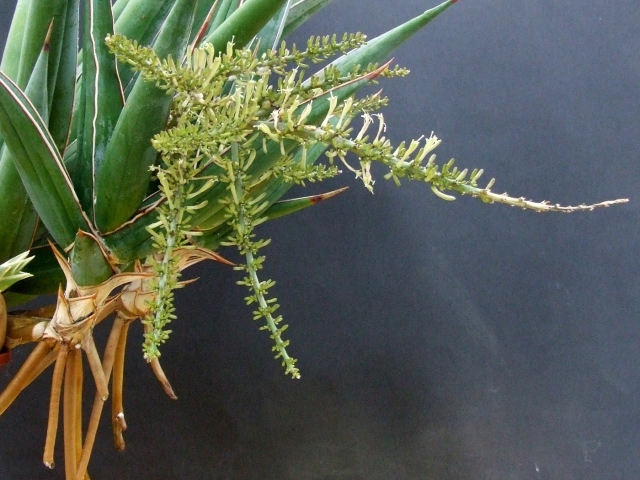https://www.reddit.com/r/succulents/comments/85451k/sansevieria_pinguicula_walking_sansevieria/
Where it is found:
Sansevieria pinguicula is found in the hot dry planes of Kenya, Africa.
Flowers:
The walking sansevieria rarely flowers in cultivation but when it does its flowers are light brownish/yellow in color.

flowers of Sansevieria pinguicula— copyright GrootscholtenEnter a caption
Reproduction:
Not only is it rare for S. pinguicula to flower, it is even rarer for its flowers to go to seed. The main way they reproduce is through their rhizomes. The mother plant shoots out a rhizome, which is a sort of underground stem, and a new plant emerges. The new plant grows its own roots and continues to grow up vertically from the rhizome. In pots, often the mother’s rhizome grows up and extends beyond the pot so the new plant is basically floating in the air. It almost looks like the new plant is “walking” away, hence their common name Walking Sansevieria.
Unique/ Interesting Facts:
Walking Sansevieria are classified as a type of Agave succulent and belongs to the family Asparagaceae
They have two Latin names: Sansevieria pinguicula and Dracaena pinguicula
They stand on thick, stilt-like roots (known as prop roots).
There are a total of 35 different types of Sansevieria.
Human Uses:
While S. pinguicula does not have any known human use besides landscape/house decoration, a study done in 2014 found that many of the other species are often used by Kenyans for practical things like making rope, for fences, and for ornamental uses. Some species are also used medicinally for treating malaria, soothing abdominal pain and treating wounds.
sources:
https://www.gardentags.com/plant-encyclopedia/sansevieria-pinguicula/32783
http://www.plantsoftheworldonline.org/taxon/urn:lsid:ipni.org:names:77183625-1
https://www.nparks.gov.sg/florafaunaweb/flora/6/2/6223
http://journals.sfu.ca/era/index.php/era/article/viewFile/820/554
this page was made by Katrina Anderson
